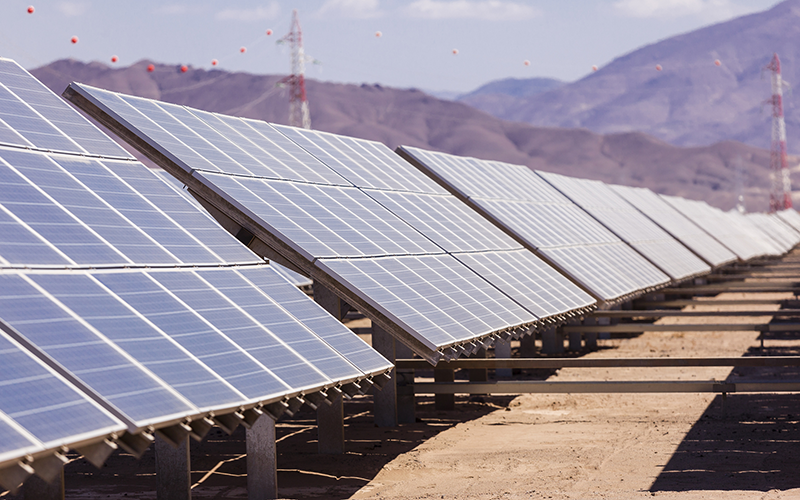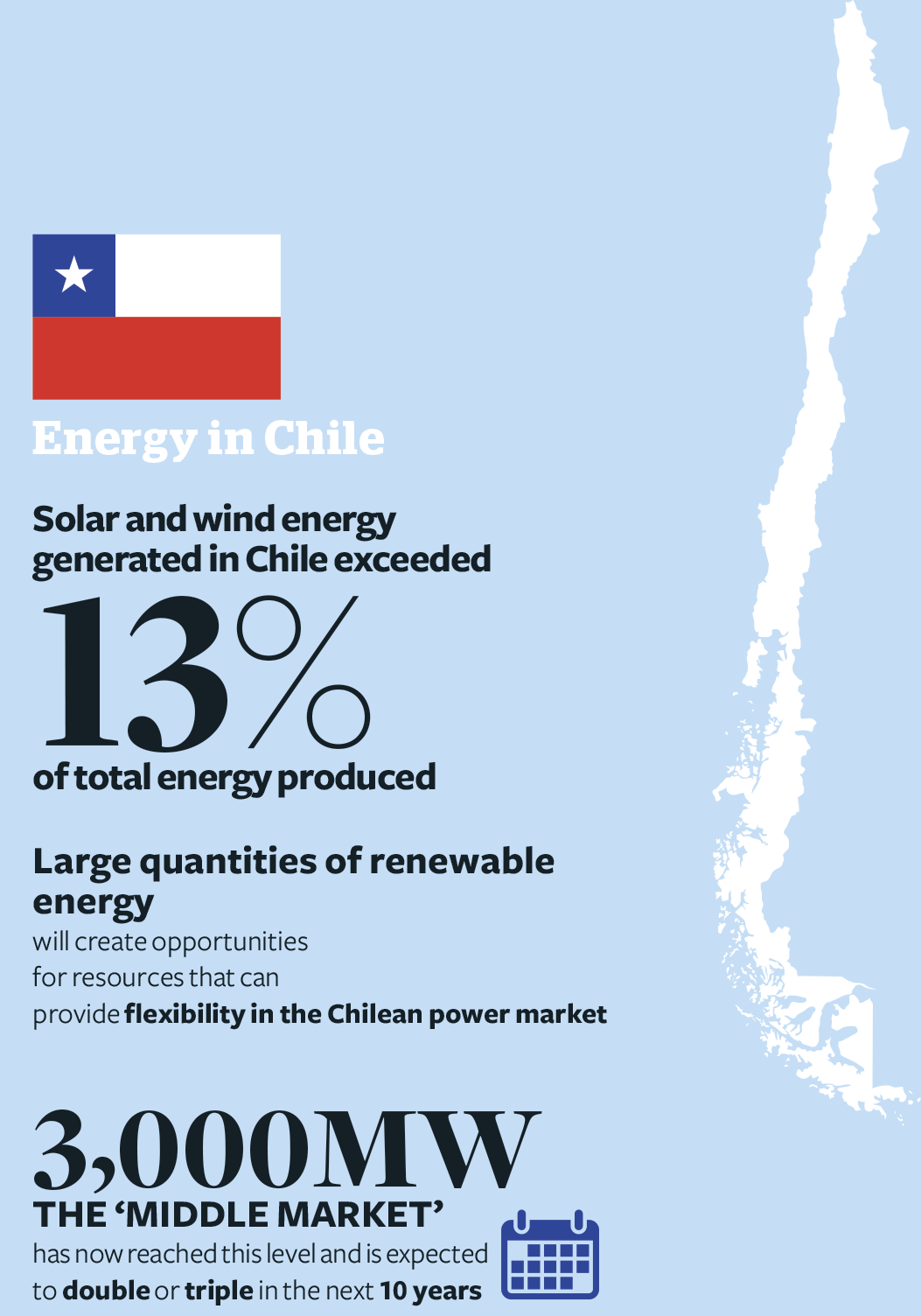Flexibility is key
As Chile learns to harvest its formidable solar and wind power resources, increasing system flexibility will be vital. It’s this ‘middle market’ that’s ripe for UK expertise, notes Carlos Barría at Inodú.

In 2017, fewer than 15 countries worldwide reached solar and wind energy production levels of greater than 10%. Of these, Chile is the only Latin American country and during October 2017, solar and wind energy exceeded 13% of its total energy produced.
European advantage
The other countries are all in Europe, and most of them are interconnected with other nations. These countries take advantage of their capacity to exchange energy with their neighbours in order to integrate more renewable energy. For example, Denmark, which, as of 2016, generated more than 40% of its energy from wind and solar, can export its excess energy to Germany, Norway and Sweden. Additionally, Denmark has direct access to what is often referred to as Europe’s hydroelectric battery, Norway, to help Denmark balance its load when the wind does not blow as expected.
Chile’s energy transformation
In contrast to its European counterparts, Chile is only connected to Argentina by a 345kV transmission line between the Salta and Andes busbars. Chile is a long country with abundant renewable energy potential across its long transmission system, with electricity demand concentrated in only a few locations. Besides being the first country in the world to establish a power market back in 1982, the peculiarities of Chile’s electric system and its rapid integration of renewables are creating new opportunities and challenges as it looks to continue to integrate large quantities of renewable energy in the future.
Flexible opportunities
The introduction of large quantities of renewable energy will create opportunities for resources that can provide flexibility in the Chilean power market. With the introduction of higher quantities of variable sources of energy, such as solar and wind, the shape of the net load duration curve (that is, load minus variable generation, which must be generated by other generation units) has changed and will continue to evolve. Integrating renewables reduces base generation capacity in the long-term and increases the need for intermediate generation capacity with more operational flexibility to satisfy the net load.
The ‘middle market’ – the dispatchable generation or storage capacity that operates at intermediate loads to cover the variations from renewable energy and electricity demand – has reached 3,000MW and is expected to double or triple in the next 10 years. Factors that will differentiate middle-market assets include start-up costs, start-up times, minimum times of operation and shut down, heat rate capacity at partial load, environmental impact, ramping capacity, ability to provide reserves and the minimum level of operation.
The competition for the middle market will also depend on where flexibility is needed in the electricity system. The location of new renewable energy projects, the location of existing assets that can provide flexibility and the evolution of the transmission system will greatly influence the regional need for flexibility. For example, south Chile has a large base of reservoir hydroelectric facilities that can use stored water to complement renewables.
 Chile’s carbon reduction commitment
Chile’s carbon reduction commitment

In 2015, Chile submitted an Intended Nationally Determined Contribution (INDC) to the COP21 climate change conference in Paris. The INDC states
that if Chile receives financial support it will commit to reducing its CO2 emissions per GDP unit by between 35% and 45% (compared with 2007 levels) by 2030. Additionally, in September 2014 the country passed a law imposing a tax on CO2 emissions produced by generation facilities with a capacity of 50MWt or more. The CO2 emissions tax excludes facilities which burn biomass and was set at US$5 per tonne of CO2 emitted.
Chile’s efforts to reduce CO2 emissions in the power sector will continue to rely on the integration of renewables. In the future, the emissions intensity (quantity of CO2 per unit of energy) of the middle market will be as relevant as its capacity to integrate renewables and meet its long-term CO2 goals.
By Carlos Barría, Consultant, Inodú.






Follow us
Advertise
Free e-Newsletter